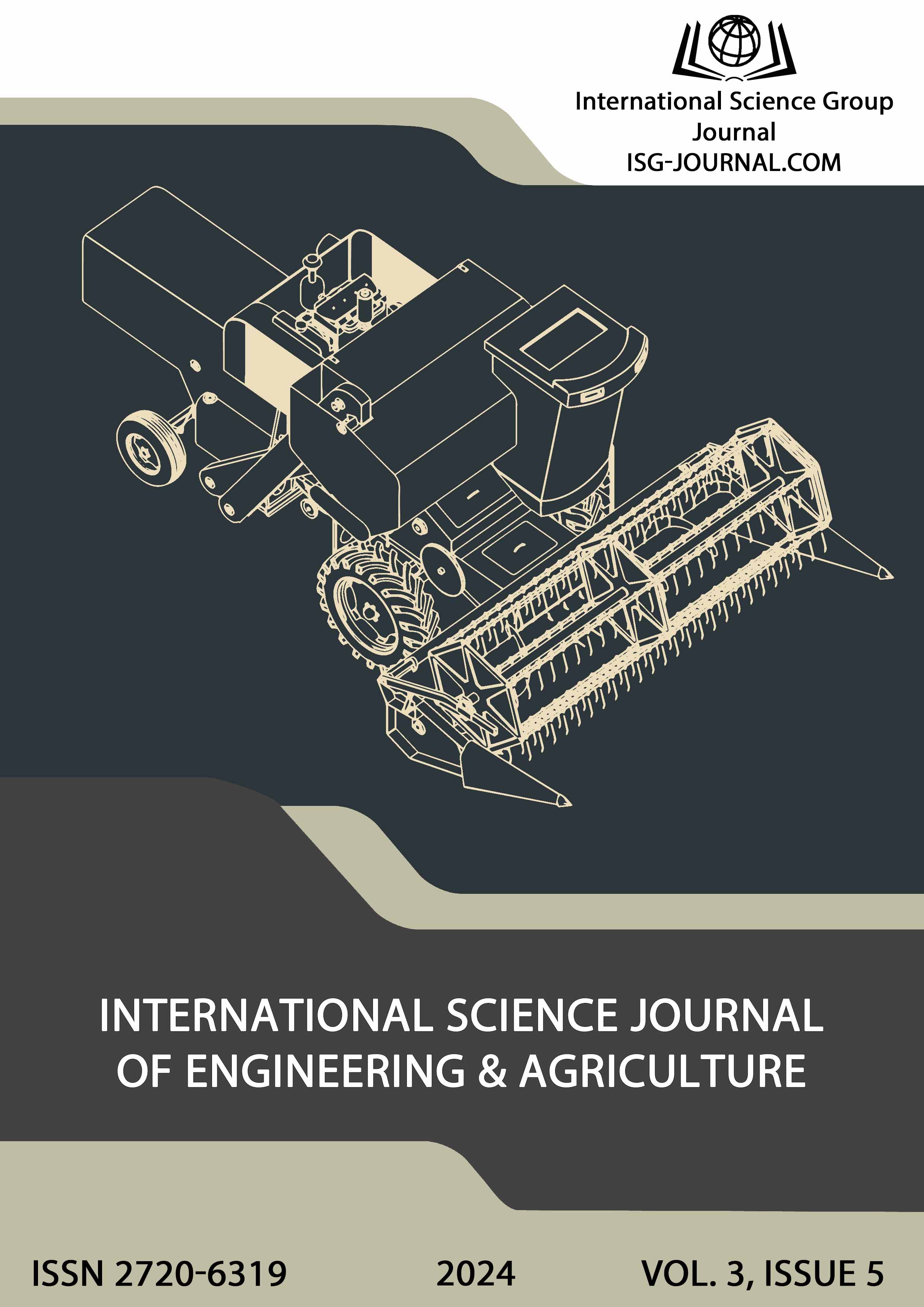Modeling of hydrogen reduction of fine iron oxide
DOI:
https://doi.org/10.46299/j.isjea.20240305.05Keywords:
hydrogen, iron oxide, mathematic model, sponge iron powderAbstract
During the multi-ton production of steel, a lot of fine by-products are formed as contamination of the environment. Traditionally, they were collected in dumps or sludge tanks. From the point of view of environmental protection, such by-products should be purified and utilized by recycling. One such refined by-product is fine iron oxide powder. It is irrational to return such the by-product for utilization in the main production of steel. As an option, processing of such iron oxide into iron powder is proposed. Reduction of the oxide to fine iron powder with hydrogen is an ecological method of processing. The problem with fine oxides is the lack of flowability of such material. It has a highly developed surface and can be highly flammable after reduction. The industrial production of iron powders today prefers the technology of atomization of overheated steel with high-pressure water, followed by annealing in a controlled atmosphere containing hydrogen. But the raw powder after atomization contains 2-3% of residual oxygen. And the fine iron oxide obtained as the by-product has a content of oxygen up to 29.5%. Therefore, the processes of annealing and reduction are very different. To study the process of hydrogen reduction of the fine iron oxide from sludge waste, experimental studies were conducted and a mathematical model of the process was developed. The mathematical model predicts the degree of reduction depending on three process control factors, namely: powder layer height, furnace temperature, and time within the hot furnace section. The main purpose of obtaining a mathematical model is the further virtual study of the process for the development of a technical task for the design of a pilot project for the production of iron powder by the method of hydrogen reduction of iron oxide. The pilot trials of the technology will be the basis for the commercial technology.References
https://www.pm-review.com/introduction-to-powder-metallurgy/powder-production-technologies/
Барре П. Кинетика гетерогенных процессов. М.: Мир, 1976. 399 с.
HOU Baolin, ZHANG Haiying, LI Hongzhong, ZHU Qingshan.Study on kinetics of iron oxide reduction by hydrogen.Chinese J. Chem. Eng.2012. Vol. 20, No. 1. P. 10–17.
Ulf Bossel, Baldur Eliasson, Gordon Taylor.The future of the hydrogen economy: bright or bleak/ Journal of KONES Internal Combustion Engines. 2004.Vol. 11, No. 1-2.P. 8 –111.
Ibrahim Dincer, Canan Acar. Review and evaluation of hydrogen production methods for better sustainability. Int.J. Hydrogen Energy. 2015. Vol. 40, Issue 34. P. 11094–11111.
Водневі ехнології зберігання енергії: Стан та перспективи розвитку. Під редакцією В. А. Яртися, Ю. М. Солоніна та І. Ю. Завалія.// Львів, Видавництво «Простір-М» 2021, - 268 с.
Kai Zeng, Dongke Zhang. Recent progress in alkaline water electrolysis for hydrogen production and applications. Progress Energy Combustion Sci.2010. Vol. 36. P. 307–326.
D. Fedorov, Malobika Karanjai, A. Sivakumar. Development of technologies to produce iron-based powders from indian “blue dust”. – PM2004 World Congress Conference Proceedings. Volume 1 Powder Manufacturing and Processing. – Austria, Vienna. – 2004. – p. 105-110.
Introduction to powder metallurgy. The process and its products. EPMA/ - Shrewsbury. UK. – 1998. – 32 p.
Ховавко О.І. Розробка теплофізичних і технологічних засад рециркуляції та регенерації водню при відновленні залізних порошків: автореф. дис... канд. техн. наук; К.: Ін-т газу, 2007. 20 c.
B.I. Bondarenko, Dr. D. Fedorov, N. Gopinath, K.C. Sahoo. Production of carbon Free Sponge Iron Powder from Blue Dust. Powder Metallurgy for Automotive and Engineering Industry. Editor P. Ramakrishnan. - Naros Publish House. New Delhi- Chennai - Mumbai - Kolkata. - 2009.- p. 131-136. ISBN-978-81-7319-934-9.- p. 123-129.
Спосіб отримання порошку заліза в агрегатах безперевної дії: пат. 65632 Україна: МКИ В22F9/22, 9/18,1/00. Покотило Є.П., Бондаренко Б.І., Святенко О.М., Федоров Д.М., Ховавко О.І., Трофімець М. В. № 2001031424; заявл. 01.03.2001; опубл. 15.04.2004. Бюл. № 4. – 5 c.
Fedorov D. Background studies and implementation of iron powder production from blue dust.PM World Congress Proceedings Volume 1 Powder Manufacturing and Processing. Italy, Florence. 2010. CD-Version 6 pages.
FedorovD. Hydrogen recirculation effects on reduction process and properties of the sponge iron powder of BDP-18 grade.Transaction of PMAI.December 2011. Vol 37.P. 1–7.
Патент № 67933, Україна МПК F02C 7/00, F23D 17/00 Cистема керування процесом очищення і рециркуляції водню при спеціальній обробці металевих порошків/ Гліке А.П., Федоров Д.М., та інші Опубл. 12.03.2012; Бюл. № 5.
Cпосіб очищення і рециркуляції водню при спеціальній обробці металевих порошків: пат. № 69933, Україна МПК B22F 9/22, B22F 9/18, B22F 1/00, B02C 7/00. Грищенко С. А.,Трухан С. П., Федоров Д. М.,Святенко О. М.,Небесний А. А., Гліке А. П., Кураж С. В.;опубл. 25.05.2012; Бюл. № 10. – 5 с.
Downloads
Published
How to Cite
Issue
Section
License
Copyright (c) 2024 Dmytro Fedorov

This work is licensed under a Creative Commons Attribution 4.0 International License.






